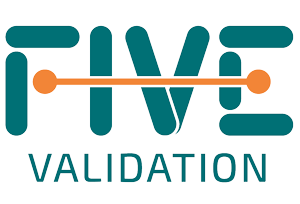SAP HANA® ERP Validation

SAP HANA® ERP (Enterprise Resource Planning) implementation process has already started in the pharmaceutical market.
By Silvia Martins and João Gomes
- This article was elaborated on April 2016.

What is HANA®?
HANA® is a solution from the German company SAP for data processing in this version of its ERP in memory form, which allows companies to have superior performance for data processing.
HANA® is almost in real time, for different layers of business. The S/4 HANA® platform has different screens from the previous generation called ECC.
The HANA® version is more intuitive with faster interfaces. The Screen Personas function allows customized screens by the user while the Fiori interface allows the operation of some functions through mobile devices.
From ECC to HANA®
A good strategy to improve the performance of the existing SAP® ECC ERP is to first migrate the infrastructure to the HANA® platform while keeping the interface with the classic ECC navigation.
The performance gain immediately goes live, with a substantial increase in the speed of processing of daily routines. However, to only migrate the infrastructure, a technical upgrade of the EHP 7 (Enhancement Package) is necessary to enable the upgrade of the ECC platform from 6.0.0 to 6.0.7 and the entry into the SAP HANA® database.

Benefits
In addition to generating documentation of system tests and challenges, validation is possible to meet business requirements, providing visibility for improvements without interfering with the compliance and adherence to good practice rules.
During the technical upgrade to the HANA® platform, the validation's job is also to ensure a high degree of security in the migration of critical data for product quality, patient safety and traceability, through master data consistency checks, and certification that custom functions and interfaces with other systems will be preserved.
Overall, ERP is one of the main systems to be validated in Life Sciences companies. It manages productive materials and finished products, material status and movements between warehouses, including approval and availability of products for commercialization.
The Computerized Systems Validation discipline aims to ensure the system's features that can impact patient health, product quality and data integrity.
Although the upgrade to the HANA® platform does not change the functionality from the user's point of view, data integrity is the focal point of the validation strategy. This is due to the main objective being associated with the guarantee that the parameterizations, interfaces with satellite systems, configurations and master data remain the same before and after the platform transition.
The validation also includes the verification of Information Technology infrastructure items, such as high availability, data backup, backup of the platform configured for the business and system recovery in the event of a crash and/or disaster.

Validation Strategy
The strategy must be risk-based as provided for the GAMP5® Computer Systems Validation Guideline. This approach is effective, modern, and used worldwide, not only for this area of validation. With a tendency to become mandatory for other validation disciplines, the Risk Assessment activity is becoming essential in decision-making in works that involve quality processes, allowing the project team to focus on critical points of the system that impact patient health, product quality and data integrity. It is important that the various, relevant GxP modules that impact the product are included in the validation project. In general, we have the impression that only functional modules directly linked to quality should be validated. However, others also impact the quality of the product and should be part of the study, such as: MM (Material Management), PP (Production Management), PM (Plant Maintenance), WM (Warehouse Management) and SD (Sales & Distribution).
For a migration strategy only from the infrastructure to the HANA® platform, the challenge is to demonstrate in the validation study that the technical (infrastructure) upgrade from the ECC platform to HANA® takes place without impact, and that the operation considers the quality aspects before, during and after the migration.
It monitors aspects such as the migration of critical data, status of productive materials and batch traceability. The most appropriate approach for validation is through a risk analysis to confirm that the project implementation format ensures the correct migration of data, configurations, parameterizations, transactions, and “Z” tables (which are not SAP® system standards), as well as how SAP interfaces with the various other product-critical systems.
The technical team of the projects must have good participation in the Functional Risk Assessment activity - an important and multidisciplinary task that has a strong weight in the success of the validation project.
In this activity, the risks are already known to the system by the day-to-day operation of key users as well as possible scenarios brought up by the technical team.
International Standards and Guidelines
A validation project is structured to meet national and international standards and guidelines, such as:
-
• GAMP5® Good Automated Manufacturing Practice;
• FDA 21 CFR Part 11 American Standard for the Use of Electronic Signatures and Electronic Records;
• Annex 11 Good Manufacturing Practice – Medicinal Products for Human and Veterinary Use: Computerized Systems, EMA (European Medicine Agency).
Contact us: [email protected]




